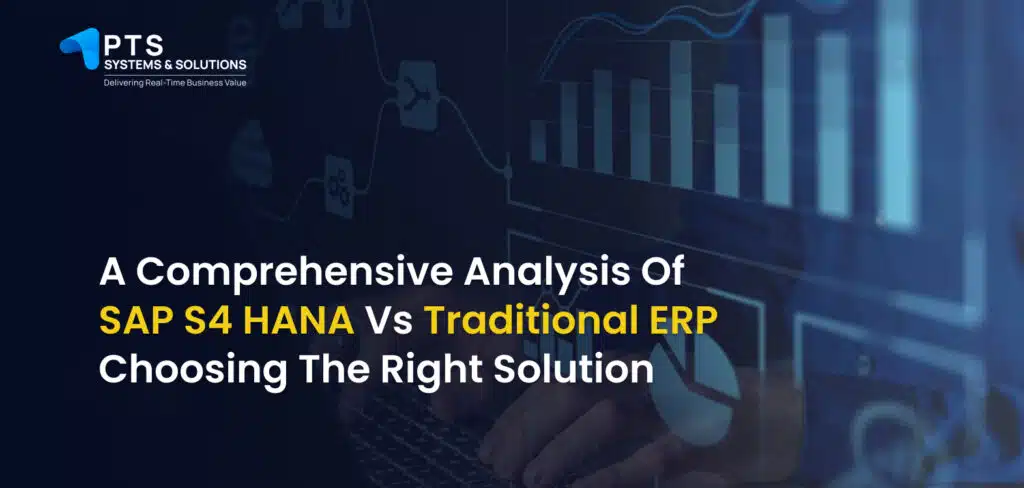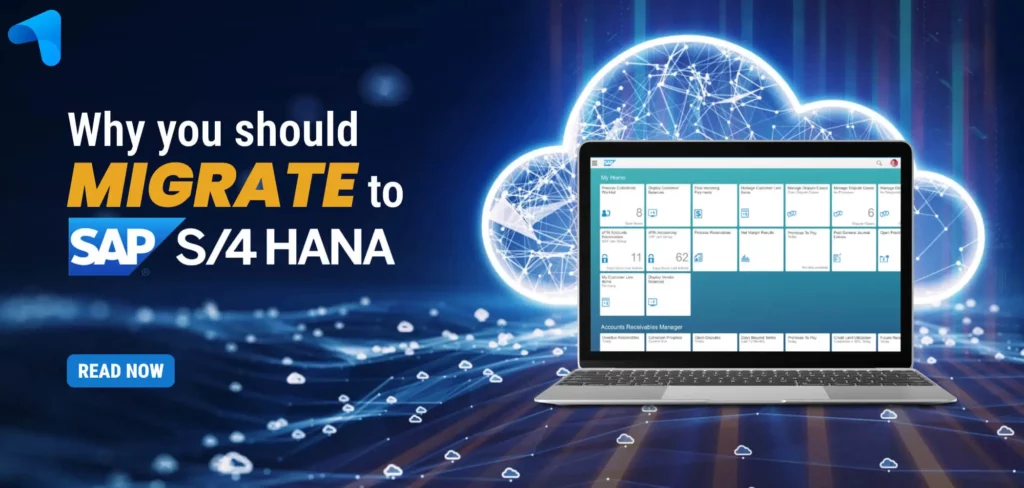A Comprehensive Analysis of SAP S4 HANA vs Traditional ERP Choosing the Right Solution
1.Introduction
As technology continues to advance, businesses must adapt and embrace new solutions to stay competitive in an ever-evolving marketplace. One area that has seen significant transformation is enterprise resource planning (ERP) systems. SAP S/4 HANA is a next-generation ERP software that promises enhanced functionality, real-time analytics, and simplified processes. However, before making the leap, it’s crucial to understand the key differences between SAP S/4 HANA and traditional ERP systems and determine which solution is the right fit for your business. This comprehensive analysis will delve into the features, benefits, and considerations of SAP S4 HANA vs Traditional ERP, helping you make an informed decision for your business’s digital transformation journey.
2. An overview of SAP S4 HANA and traditional ERP systems
We’ve explored the features and benefits of both SAP S/4 HANA and traditional ERP systems. Now, let’s compare them. This comparison will guide your decision-making.
SAP S/4 HANA and traditional ERP systems differ in their underlying technology. SAP S/4 HANA uses an in-memory computing platform. This allows for real-time data processing and analytics. Traditional ERP systems typically rely on a disk-based database. This results in slower data retrieval and analysis.
Scalability is another factor. SAP S/4 HANA can handle large data volumes and support business growth. Traditional ERP systems may need additional hardware or software upgrades for increased data volumes.
SAP S/4 HANA uses advanced technologies like artificial intelligence and machine learning. These provide intelligent automation and predictive analytics capabilities. This can help businesses make accurate decisions and drive innovation. Traditional ERP systems, although mature, may not offer the same level of advanced analytics and automation.
In the next blog section, we’ll delve deeper into these differences. We’ll evaluate factors like implementation complexity, cost, and user experience. Stay tuned for a comprehensive analysis that will guide your decision-making.
3. Features and benefits of SAP S4 HANA
Now that we have a basic understanding of SAP S/4 HANA and traditional ERP systems, let’s dive deeper into the features and benefits of SAP S/4 HANA.
One of the key features of SAP S/4 HANA is its use of in-memory computing, which allows businesses to process large amounts of data in real-time. This means that you can access up-to-the-minute information and make informed decisions faster than ever before. Additionally, SAP S/4 HANA offers advanced analytics capabilities, enabling you to generate valuable insights from your data.
Another benefit of SAP S/4 HANA is its simplified data model. Unlike traditional ERP systems, which can have complex and fragmented data structures, SAP S/4 HANA provides a single source of truth for your data, making it easier to manage and analyze.
Furthermore, SAP S/4 HANA streamlines processes, increasing productivity and efficiency in your organization. By eliminating redundant steps and automating manual tasks, you can optimize your workflows and achieve cost savings.
In the following section, we will explore the features and benefits of traditional ERP systems, allowing you to compare and contrast the two solutions and make an informed decision for your business. Stay tuned for an in-depth analysis!
4. Features and benefits of traditional ERP systems
Now that we have discussed the features and benefits of SAP S/4 HANA, let’s take a closer look at traditional ERP systems. While SAP S/4 HANA offers cutting-edge technology and advantages, traditional ERP systems have their unique features and benefits that may make them the right solution for your business.
One of the key features of traditional ERP systems is their maturity. These systems have been around for a long time and have undergone numerous improvements and enhancements. As a result, they offer a stable and reliable platform that has been proven to handle the needs of businesses across various industries.
Additionally, traditional ERP systems often have a wide range of modules and functionalities. From finance and accounting to supply chain management and human resources, these systems provide comprehensive solutions that can support all aspects of your business operations.
Furthermore, traditional ERP systems offer a high degree of customization. Businesses can tailor the system to their specific requirements, ensuring that it aligns with their unique processes and workflows.
In the next blog section, we will compare and contrast the features and benefits of SAP S/4 HANA and traditional ERP systems, enabling you to make an informed decision about which solution is the best fit for your organization. Stay tuned for an in-depth analysis!
4. A comparison of SAP S4 HANA vs. traditional ERP systems
Now that we have explored the features and benefits of both SAP S/4 HANA and traditional ERP systems, let’s dive into a comparison of the two. This will help you make an informed decision on which solution is the best fit for your organization.
One major difference between SAP S/4 HANA and traditional ERP systems is their underlying technology. SAP S/4 HANA is built on an in-memory computing platform, which allows for real-time data processing and analytics. Traditional ERP systems, on the other hand, typically rely on a disk-based database, resulting in slower data retrieval and analysis.
Another aspect to consider is scalability. SAP S/4 HANA offers a highly scalable solution that can handle large volumes of data and support the growth of your business. Traditional ERP systems may require additional hardware or software upgrades to accommodate increased data volumes.
Furthermore, SAP S/4 HANA leverages advanced technologies such as artificial intelligence and machine learning to provide intelligent automation and predictive analytics capabilities. This can help businesses make more accurate decisions and drive innovation. Traditional ERP systems, although mature, may not offer the same level of advanced analytics and automation.
In the subsequent blog section, we will delve deeper into these differences, evaluating factors such as implementation complexity, cost, and user experience. Stay tuned for a comprehensive analysis that will aid you in choosing the right solution for your organization’s needs.





